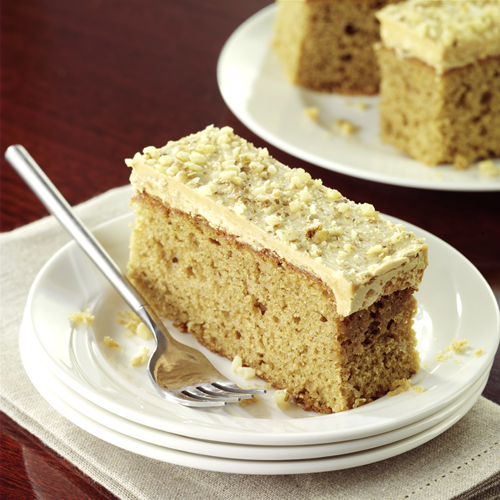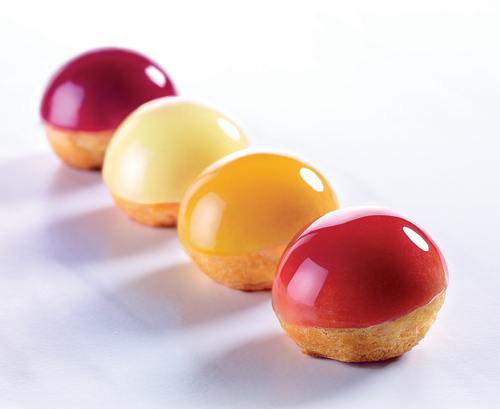Frozen food: Back and cooler than ever
It's time to let go of your preconceptions about frozen food, and embrace its convenience and quality, says Anne Bruce
From Korean curry to gluten-free gratin,and sourdough pizza to blueberries, today's frozen food has a lot to offer the time-pressed caterer.
According to data from research body Horizons, the frozen food share of the food-service market in 2013 was worth £2.24b.
McCain Signatures ready baked jackets with beans and cheese
The figures are positive across the board, with frozen food sales up 7% in the education sector - boosted by the Government's new free school meals policy - 4% in full-service restaurants, 3% in business and industry, and 3% in travel sport and leisure. Meanwhile, chilled food sales were down 3.1% in wholesale.
British Frozen Food Federation (BFFF) chief executive Brian Young says that caterers have seen the economic downside of chilled food, with higher wastage levels and shorter shelf life. Freezing puts products that tap into the latest food trends, such as authenticity, provenance, global, healthy eating and gluten-free, within easy reach.
So what are the biggest areas of growth as frozen food enjoys this renaissance? And what innovations does the future hold?
Bidvest Foodservice coffee and walnut cake
Brakes' director of customer engagement Jennie Fisher says that as customers focus on reducing waste and time and labour costs, demand for specific items has risen over the last two years. Frozen individual patés, for instance, are very popular.
While the more traditional frozen vegetables remain very important within education and healthcare, sales of frozen vegetables have been falling across the foodservice sector.
Brakes has developed into new areas such as premium vegetable side dishes. New lines include seasoned potato and vegetable steak sides, creamy spiced lentils and whole green beans with garlic butter portion packs.
Fisher says: "We see premium side dishes as a huge growth opportunity. Chefs no longer want a long list of expensive ingredients and high levels of waste, so by moving to a frozen product, these aspects are removed."
The supplier's job is also to ensure that the flavour is not compromised, so chefs can deliver something that tastes, looks and feels as though it was made in-house.
Demand for frozen fruit is also increasing due to a growing trend for smoothies. Using frozen fruit gives caterers access to fruits that spoil quickly, reducing waste and preparation time. And fruit pricing can be quite volatile, while the cost of frozen is more stable.
Stephanie Hickford, customer marketing controller at Bidvest Foodservice, says that the frozen-food market is expected to grow considerably over the next five years, driven by the growth in eating out (3% increase in spend in 2015 versus 2014, according to M&C Allegra Foodservice).
Improved consumer perceptions about the quality of frozen food also have a major role to play, she says. "Since the horsemeat scandal, the industry has had to turn around perceptions of frozen food. Now, growing consumer confidence in frozen foods coupled with developments in technology mean that demand will only continue to grow."
Brioche Pasquier's Bulles de Fruits
Fish is an area where work is ongoing, Bidvest Foodservice recently ran a new 'Fish 'n' Switch' campaign, to help customers understand the benefits of buying frozen fish and develop their seafood offering in line with the consumer trends.
Using frozen food can also reduce an outlet's number of deliveries and help reduce waste, says Hickman. Bidvest Foodservice also offers frozen, pre-portioned products, and special-diet products such as gluten-free, dairy-free, vegetarian and kosher.
The potential downside of buying frozen is that freezers can be costly to run and take up valuable back-of-house space, Hickman says. So, Bidvest Foodservice is focusing on delivering appropriate pack sizes, split cases, stocking more frozen products in its own depots and offering consolidated deliveries.
Brian Young from the BFFF says that the Frederations' Perception and Usage of Frozen Food surveys, conducted in 2012 and 2014 - completed by chefs and caterers from cost and profit sectors - show that they are increasingly aware of the benefits of using frozen, such as quality, cost and lack of waste.
"In 2014, 95% of chefs and caterers were stocking and using frozen ingredients, with 85% using frozen food at least weekly," says Young. "The 2014 survey showed that 86% of chefs and caterers believe that frozen foods are frozen at the peak of their quality - an increase of 16% on 2012 results - and 82% of chefs and caterers understand that freezing locks freshness into products - a 22% increase on 2012 results."
The survey also revealed that almost 94% of chefs agreed that frozen food reduced waste as it offered better portion control and 82% claimed that frozen could help with long-term menu planning - an 8% increase on 2012 results.
Young says: "Frozen food offers numerous benefits for caterers seeking solutions that meet changing consumer dining habits, as it helps to maintain stock control, reduce overheads and improve the bottom line while meeting the expectations for quality and flavour."
As consumer food choices become more sophisticated, using premium frozen products can be a better call than making the same product fresh to order.
Brioche Pasquier's Tartelettes au Chocolat
Key categories
Bread
Speciality Breads managing director Peter Millen says that with many bakeries closed at the weekend, frozen breads are dependable, can be stored easily and only need to be defrosted an hour before they are required.
"Most consumers honestly would not know that our breads come as a frozen product," he says.
Potatoes
Nic Townsend, marketing manager UK and Ireland of Farm Frites, says that chips and French fries account for 73% of total out-of-home servings of potato products, according to Potato Council stats for 2014.
Farm Frites has launched Quick Oven Fries for outlets without a fryer, as they can be oven-cooked from frozen in just four minutes with no preparation.
Operators are also focusing on premium presentation, adding toppings, or introducing a second, more premium style of chip, says Richard Musgrave, McCain Foods senior brand manager.
Poultry
Sales of frozen poultry products have increased in the past 12 months says Nigel Parkes, purchasing and marketing director of Flagship Europe. Changing lifestyles mean that consumers no longer plan their meals as they used to. Foodservice operators can't accurately predict demand so are turning to frozen to avoid wastage.
Frozen cooked poultry products also offer reduced risk of cross-contamination when compared to fresh raw products and the risk of an item not being cooked properly.
Coatings which give added flavour and convenience are on-trend. Flagship is about to launch a small range of buttermilk-coated and then Tabasco-coated chicken products.
Fruit and veg
ARDO's vegetable fries
Stuart Hiscott, marketing manager at Ardo UK, says frozen fruit has become increasingly popular as a breakfast topper or smoothie ingredient and caterers are using vegetable mixes and added-value ranges such as vegetable fries as a healthy option.
Frozen salad cart options are replacing fresh, and side plate offerings such as mushrooms and vegetable mixes are now all commonly frozen products.
PÁ¢tisserie
Neil Lunn, marketing manager, Brioche Pasquier says that ready-made pÁ¢tisserie can accommodate the latest trends, without the time and effort of making from scratch.
PÁ¢tisserie is visually appealing, and will impress customers and contribute towards the overall impression of the quality of service being provided.
European Commission labelling change
'Date of freezing' (or first freezing where products have been frozen more than once) is now required on labels for frozen meat, frozen meat preparations and frozen unprocessed fishery products sold to consumers in line with European Food Information to Consumers (FIC) Labelling Regulations No 1169/2011.
The Department for Environment Food & Rural Affairs has confirmed that, where a complex finished product is being made using sub-ingredients, it will regard the 'date of freezing' as being that on which the finished product was first frozen and not the date on which any sub-ingredients contained within it were first frozen.
The European Commission's initial view was that all meat should be labelled with the first time it was frozen after slaughter or for fish when it was caught; however, it said it would leave individual member states to decide on interpretation, following lobbying by the food industry.
BFFF chief executive Brian Young comments: "The compromise is not only great news in terms of financial benefits but will also help to reinforce the changing perceptions of frozen food among consumers. The previous recommendations put unreasonable constraints on manufacturers and reinforced the negative stereotypes of frozen food."
Also, as a result of these changes to EU industry legislation, from January 2016, suppliers will transition into only declaring net weights without any ice glaze.
Latest video from The Caterer
Continue reading
You need to be a premium member to view this. Subscribe from just 99p per week.
Already subscribed? Log In















